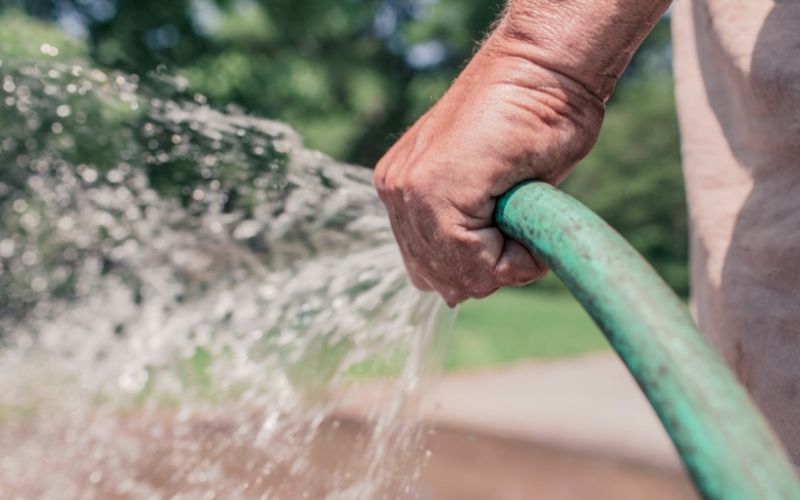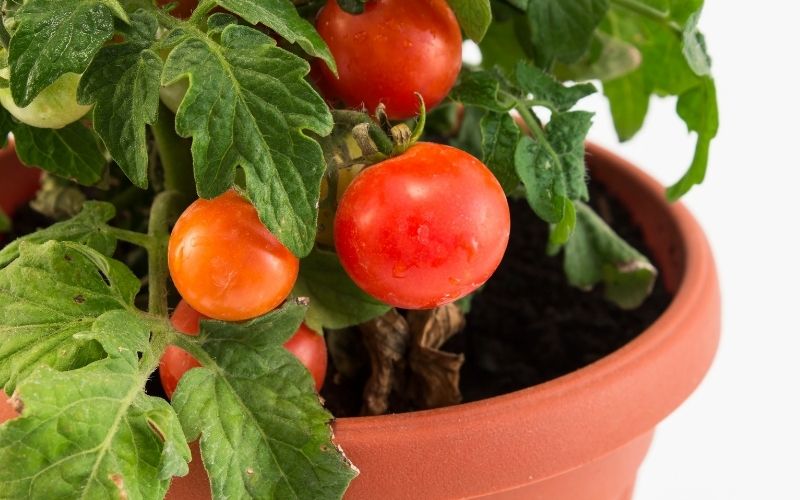Deep watering or deeply watering your vegetable garden can help your vegetable plants grow larger and stronger roots, and will in turn make them more drought tolerant. Watering deeply will provide your plants with sufficient moisture throughout the root zone and encourage the roots of your plants to grow to obtain as much water and nutrients as needed.
Maximum vegetable root depth
To be able to provide enough moisture throughout the root zone, it is important to be aware of the depth to which the roots of each type of vegetable plant can grow. Vegetable plants that can grow deeper roots will need to be provided with more water than shallow-rooted plants for the entire root zone to be kept moist.
- Shallow-rooted vegetables: Onions, Radish, Celery, Spinach, Lettuce, Broccoli, Brussels sprout, Potatoes, Mint, Beans (green), Cabbage
- Medium-rooted vegetables: Artichoke, Parsnip, Squash, Turnip (white), Beets, Peas, Peppers, Carrots, Chard
- Deep-rooted vegetables: Sweet Corn, Pumpkin, Cucumber, Sugar beets, Eggplant, Sweet potatoes, Tomatoes, Asparagus
Different sources make the division at different cut-off values which can change the categorization a bit. Find the exact maximum vegetable root depth range and access a free downloadable vegetable root depth chart by clicking on the highlighted text.
Encouraging the growth of larger and stronger roots
You can encourage the roots of your plants to grow as deep and wide as possible so that they can obtain as much water and nutrients as needed by watering your plants only as frequently as needed.
The minimum frequency needed depends mainly on the type of soil and the climate. Sandy soils drain faster and will need more frequent watering, while clay soils retain more water and will need less frequent watering. Loamy well-balanced soils fall in the middle of these two extremes. You’ll also have to water your plants more frequently during very warm periods, while you can water them less frequently during milder weather.
Watering your plants only as frequently as needed will train your plants to send out more roots over a wider area to find water and nutrients from deeper within the soil. In turn, this will help your plants grow larger and stronger roots.
Keeping enough space between your vegetable plants is also important for your vegetable plants to be able to grow larger and stronger roots.
How to water deeply with a hose

This method is only suitable for in-ground vegetable gardens or raised bed vegetable gardens connected to the ground. Scroll down to find out how to deeply water container vegetable gardens.
One of the easiest ways to make sure that you are watering deeply each time is by using a hose. You will first need to roughly determine how much water your garden needs based on the size of your garden and the potential maximum depth of roots in your garden.
As a general rule of thumb, your vegetable garden needs 2 inches of water each week. You can make sure that your plants are being deeply watered when they get this much water by sticking a stick in the ground up to the maximum depth that you expect the roots to grow and checking if it is moist.
Then, you can use a barrel or bucket to measure how long it takes for your hose to release that much of water. When watering your plants, you can place the hose at the base of your plants in the middle of your garden and keep your hose on for the same amount of time. It’s as simple as that!
To make it easier to deeply water your vegetable garden, you can grow vegetable plants that have similar root depths together. This is known as hydrozoning. This will help plants in each hydozone get the correct amount of water that they need. Then, you can use the process detailed above separately on each hydrozone to determine how long you will need to deeply water each hydrozone.
Deep watering container-grown vegetables

Deep watering potted plants or container vegetables is a bit different than when these plants are grown directly in the ground or in raised beds connected to the ground.
For potted plants, the only soil that they have access to will be that which is already in the pot. This means that there should be enough of soil in the pot for the plant and for that to happen the pot or container should be large enough to hold that much soil.
For smaller plants like lettuce, peas, onions, and garlic, a container with a volume of two gallons or more and that is at least four to six inches deep will be sufficient. To grow larger plants, like tomato, eggplant, cucumbers, and peppers, you will need containers with a volume of at least 5 gallons that are at least 12–16 inches deep.
Container plants have to be watered rather frequently, usually once a day, but watering as often as twice a day may be needed during very warm weather since they only have access to a limited amount of water. This won’t negatively affect the growth of roots as long as the containers or pots used are large enough and the plants are provided with enough fertilizer.
Overall, deeply watering your vegetable plants will help you grow vegetable plants that have stronger roots making your plants more drought tolerant. Knowing the depth to which the roots of your vegetable plants can grow is useful in this respect. Apart from this, watering only as frequently as needed is important for in-ground and raised bed vegetable gardens, while the size of the container is more important for container vegetable gardens.

